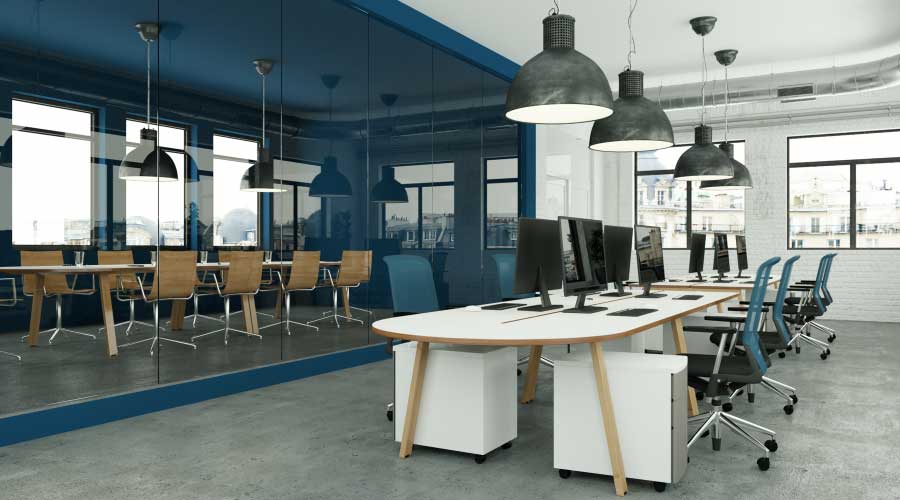Keep Need For Future Changes In Mind When Setting Up Daylighting Systems
Lighting experts and researchers agree that building operators need to be able to make ongoing adjustments to address occupant complaints, changes in space use or furnishings and other modifications to the facility. Even with one year of operation to see how the daylighting system performs, some problems may not surface.
For example, a manufacturing defect on a daylight redirection device might cause intense glare for a few occupants only a few hours annually under certain very specific lighting conditions. This wouldn't be detectable during the building's turnover phase, or possibly even during the warranty period. So identifying the root cause for the problem becomes essential before occupants attempt to correct it themselves with solutions that do not address the real problem.
"Preparing a solution set that can help improve occupant comfort is an approach we have used in the RSF," explains Scheib. The RSF process begins by assessing the environment to see if the issue can be addressed at the occupant's space rather than at the window.
"Can the occupants reorient in the modular furniture?" asks Scheib. "Can an adjustable and right-sized glare panel be placed at the workstation so it can be used at the time of perceived glare but then removed if not needed? Can they relocate with another employee who is comfortable in the space?" Using the answers to these questions has allowed RSF to maintain its daylighting control system's intent over the years.
With routine monitoring, recommissioning, and periodic recalibration, many daylight harvesting systems can provide occupant comfort and still maintain their initial energy savings from letting the sun shine in.
Rita Tatum, a contributing editor for Building Operating Management, has more than 30 years of experience covering facility design and technology.
Softer Benefits of Daylighting
Productivity and workplace improvement are difficult to quantify. However, studies on daylighting's connection to student learning done by Heschong Mahone Group found 20 percent improvement in student learning rates when daylighting was a positive element.
In another study, Heschong Mahone Group looked at more than 100 stores in a retail chain. The major difference in design was that more than 60 percent had skylights. When the sales figures were analyzed, stores with skylights had an average of 40 percent higher sales.
Why daylight affects productivity is not completely understood, but there is growing physiologic evidence that daylight decreases melatonin, the body's natural sleep aid. Sunlight suppresses melatonin and increases serotonin, explains Tom Hootman, director of sustainability at RNL. "Serotonin during the day elevates mood," making people feel more alert and energetic.
Other daylighting benefits include providing sensory variability, connection to nature, and full-spectrum light, which can provide a more pleasant and comfortable visual environment, says Craig DiLouie, education director, Lighting Controls Association.
— Rita Tatum
|
Related Topics:













